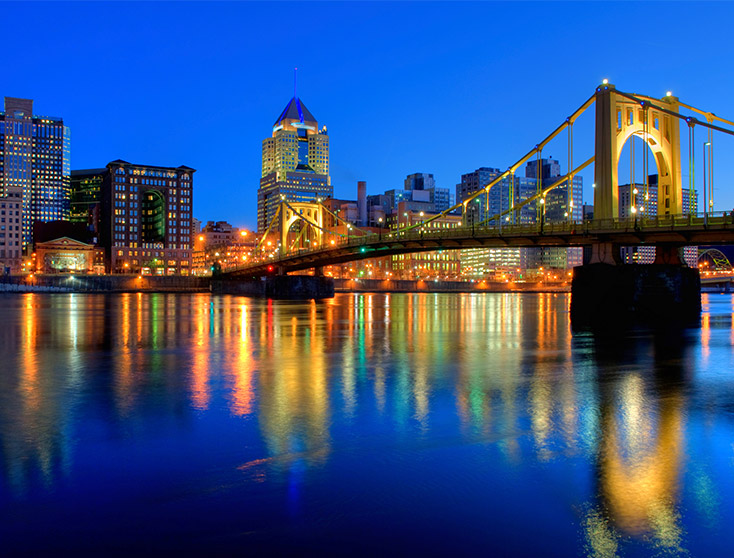
The New Best Cities for Millennials
No doubt, millennials have it tough. It’s hard for them to find jobs in the competitive post-recession economy, and as a generation they feel torn between the modern urban life they crave and the insurmountable cost of living in the top cities. But the American Dream isn’t unattainable for millennials — it just seems to be moving.
Which is why many millennials are heading not for the suburbs or small towns but are instead seeking out smaller cities, many out West, where both the competition and the overhead aren’t as steep. But sometimes even the expert lists of Best New Cities for Millennials read like an Onion article to those actually struggling with affording them.
My husband and I are Generation X, but we also felt the same crunch as Boston became more expensive, and last year decided to move to Austin, Texas — a city growing at the rate of 175 new people per day and sitting at the top of nearly every expert list of the Best Cities for Millennials, including the Huffington Post’s. But, after living here for a year, I’m sad to report that Austin is quickly becoming just as expensive as Boston, and just as competitive for jobs, so don’t buy your cowboy boots just yet.
Luckily, there are still many smaller cities perfectly situated to offer millennials that Goldilocks opportunity of living in an urban setting and find good jobs without permanently verging on financial peril.
Here are four to consider:
Pittsburgh
This recent story from Clickhole explores the plight of “up-and-coming millennials, among those hit hardest by the sluggish economy, looking for the next affordable, undiscovered city to settle in,” and the bold statement that Pittsburgh just may be “the new Austin.” With low rents, a thriving arts scene, and old-school American authenticity, they may be right and Pittsburgh “may be becoming the unexpected new home for a generation.” According to a half-million millennial survey by Niche, the recent tech boom in Pittsburgh has made it the 15th best city in the country for millennials, beating out Los Angeles, Atlanta and New Orleans. With median rent at only $672 per month, it’s easy to see why this working-class Rust Belt city is seeing a renaissance with Gen Y.
Des Moines
According to The National Journal, the Des Moines population growth among millennials between 2006 and 2013 was more than twice the national average. Why? Zachary Mannheimer, executive director of the Des Moines Social Club, puts it this way: “If you want to make an impact in your own lifetime, is it better off to do that in an oversaturated city, or is it better to come to a new place and try to pioneer something, or join a cause that has already begun, and really make something established in your lifetime, that you can point to and say, ‘I helped do that.’ That’s not going to happen in New York or Chicago or San Francisco or any of these places, because it already did. It is going to happen in Des Moines, in Tulsa, in Boise, in Reno. This is the new chapter of America.” With a median home price of just $153,000 and job growth at 3 percent, it’s easy to see the case for Des Moines.
Kansas City
At the heart of the “Silicon Prairie,” with opportunities to work at Companies Where Millennials Thrive like software start-up Briefca.se, Kansas City is quickly becoming a hot alternative to relatively nearby cities like Chicago, St. Louis and Austin. According to the New York Times, the population of downtown Kansas City has increased by 50 percent since 2000, and more than 25 percent of residents are millennial, drawn by “average rental rates for the most desirable units . . . at $1.30 to $1.60 per square foot,” or about $1,000 per month.
Palm Springs
Millennials and hipsters flock to the Coachella Valley every year for the eponymous music festival and an obligatory selfie at the famed ACE Hotel, but Gen Y expert and Boston native Dan Schawbel recently spoke at the Coachella Annual Economic Summit about his observations regarding the area’s distinctive employment environment — which apply to any city looking to attract millennials. “Research has been done that suggests that millennials choose experiences over material objects,” Schawbel said. ‘In order to attract millennials, you must promote things that make your area unique and appealing, showcasing the best elements that you cannot find elsewhere. Invest in creating activities to draw in younger workers. Millennials typically look for low cost of living and public transportation . . . many would rather not own a car. They seek interesting and engaging activities.”
Melissa Massello is a freelance writer.

